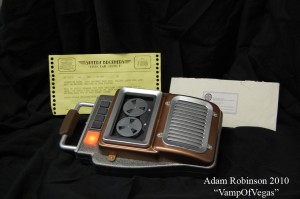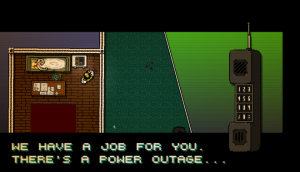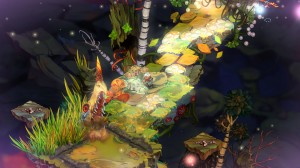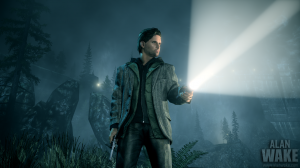Audio Logs Are Terrible: 4 Better Ways To Tell Stories
- Updated: 14th Nov, 2012
 Is it not a little weird that in the universes where games take place, aside from whatever divergence they make from the proper course of history, there’s also a widespread epidemic of people suddenly deciding to note their thoughts over audio? It’s strange that people adopt that habit despite it never catching on before and us having dozens of other, better, methods of communication already available.
Is it not a little weird that in the universes where games take place, aside from whatever divergence they make from the proper course of history, there’s also a widespread epidemic of people suddenly deciding to note their thoughts over audio? It’s strange that people adopt that habit despite it never catching on before and us having dozens of other, better, methods of communication already available.
There’s a lot of confusing things about audio logs. They don’t make sense as a part of the world, they don’t make sense as an item scattered around haphazardly and they’re never contextually appropriate or thematically consistent. They’re used as a simple way to convey narrative in slight chunks and to count as a portion of gaming’s – now regretfully necessary – collectable tally to extend gameplay. None of that’s too insulting, but as games allow us to hear anything, see anything and be anyone, it’s a waste of the medium when the person we are is a man standing perfectly still in a corner of a room listening to someone else’s understanding of events on an oversized tape deck.
Audio logs are a problem; they’re a lazy solution to a necessary part of storytelling. We absolutely need ways to gradually have information revealed, but we can’t rely on the same method over and over. It’s tiresome, but it’s easily fixed. If you’re a game developer, here’s 4 better examples of ways to tell stories. If you’re playing games, here are 4 things to demand instead of boring audio.
1) Let us reach our own conclusions
No other medium can drop you into a room and give you the perspective of someone that’s inside it, walking around, uncovering the events themselves for the first time. Gaming lets you have fresh eyes on an event that already happened, the same as the character you’re playing. You can gradually understand what’s gone on there as you’re exploring.
Fallout does this particularly well. It’ll let the player find weird situations that have transpired years before and never outright explain them. It uses level design and misé en scene as a way to display information rather than outright tell you about it from someone else’s perspective.
Fallout 3 had an infamous room covered in plungers and inhabited by a single ghoul. It was more interesting to enter, see that it made absolutely no logical sense, and come up with your own interpretation of how this came to exist. It wouldn’t even be notable if instead it had included an audio diary of someone rattling off the intense reasoning behind their toilet-declogger collection.
This doesn’t just work in creating a weird non-sequitor. Here’s another example of how you can offer up a situation that unfolds as it’s investigated:
Build a poker table. Have a skeleton sitting there. Leave a handgun on the table and some discarded cards too.
From looking at this set-up, the player will know someone has died, the handgun informs them that’s probably how they were killed, and if they look closely at the cards they’ll see the poker player was shot for cheating. They get to feel the satisfaction of having pieced together the events of the room by themselves rather than relying on second hand information. Audio logs rob the player of their own discovery, they make games less about experience and more about linear progression. Letting the player gradually fit pieces together makes the journey their own.
1b) Show us how places change over time
Hotline Miami starts every level with a trip back to your apartment. Each time you return there you’ll see something different about the environment. It’s too good to spoil entirely, but in suffice you’re told a gradually unfolding story about someone, totally wordlessly.
 You don’t know anything about them, you never have a conversation with them or are explicitly told how they feel, but just from the way the level is set up you piece together everything you need to know.
You don’t know anything about them, you never have a conversation with them or are explicitly told how they feel, but just from the way the level is set up you piece together everything you need to know.
The way the apartment changes also lets you get a glimpse at how the lead character’s mental state is deteriorating, and this is all through set dressing. You begin to wonder how much of what you’re seeing is real. It puts a lot of the rest of the game into question and makes you start to consider whether you’re viewing events through the eyes of an unreliable narrator, but you’re never outright told any of this.
2) Just Be Bastion
I said before that Audio Logs aren’t often contextually appropriate. They’re an item included in the game, but their existence itself doesn’t play into the narrative. In Bioshock, a main offender in overusing this method, the plot doesn’t explain the prevalence of audio logs. They’re present in that world and that’s all that’s said on the matter. If they had always been an item that we use then it’d be different; There would be no need to justify them, but they aren’t. They’re a new factor in the world and that needs to be addressed.
 The way that Supergiant Games’ Bastion informs the player of any back-story is the same way it informs the player of anything else. You’re listening to someone tell the story of what’s happening to you as you act it out. It keeps the way that it delivers narrative the same. Audio logs suffer from standing out as a weird entity in the world. They shouldn’t be there, it’s odd that they are and they are rarely explained. They’re taken for granted. Bastion’s method makes total sense.
The way that Supergiant Games’ Bastion informs the player of any back-story is the same way it informs the player of anything else. You’re listening to someone tell the story of what’s happening to you as you act it out. It keeps the way that it delivers narrative the same. Audio logs suffer from standing out as a weird entity in the world. They shouldn’t be there, it’s odd that they are and they are rarely explained. They’re taken for granted. Bastion’s method makes total sense.
Some of the information it gives out is entirely optional and offers back-story about characters in the world. This isn’t dealt out by just standing around listening to a monologue; this was dealt out by completing challenge rooms where each wave was met with a new line of speech adding greater background. It revealed content gradually but it made a challenge and still interactive while you listened.
3) Just be Alan Wake
Alan Wake has a narrative delivery system that’s thematically consistent and, again, contextually appropriate. He’s a writer living out the pages of a story he’s already produced. You find those pages and get a better understanding of the story. These made the collectables a legitimate part of the game, grounded them within the world and made them featured in the story.
 Some of these pages gave you foreshadowing of future events and others filled in gaps when you’re character wasn’t present. Others provided the service of giving historical context.
Some of these pages gave you foreshadowing of future events and others filled in gaps when you’re character wasn’t present. Others provided the service of giving historical context.
They still suffer from gluing the player to a static block of text in an interactive medium, but they’re at least an instance of collectable narrative that justifies its existence in-world.
4) Okay, fine. Do it, but make THAT your game.
Christine Love makes visual novels. These are games where the main mechanic is that clues are gradually revealed through reading. Players will pick up assorted information that doesn’t immediately make sense, but eventually will piece a mystery together and use what they know in order to move forward. Her most recent example, Analogue: A Hate Story, is not a game where the mystery and the plot are ancillary to the enjoyment. You either appreciate and take in the narrative or you’re stuck. That’s what the game is. It relies on conveying new plot.
There isn’t really anything that does this for audio recordings yet, so perhaps it’s a poor example, but if you’re able to make a game where the entire purpose is to collect audio recordings and listen to them, then that’s a fantastic use. The problem is when you create, say, a shooter instead. Using audio logs anywhere but in a game that relies on them hammers in context without finesse. When the information is inessential and it’s inelegantly delivered, it’s a poor use of the approach.

Pingback: The Sunday Papers | Rock, Paper, Shotgun
Pingback: Oh No! Video Games! - Nontent